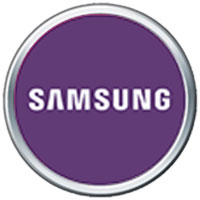
Common Computer Problems and Their Repair Solutions
Computers are integral to modern life, but they can encounter issues that disrupt productivity and cause frustration. This article explores some of the most common computer problems and provides practical solutions to address them, empowering users to troubleshoot effectively.
1. Slow Performance
Problem:
A computer that takes ages to load applications or respond to commands is a frequent complaint. This can stem from various causes, including insufficient memory, cluttered storage, or background processes hogging resources.
Solutions:
- Free Up Disk Space: Delete unnecessary files, uninstall unused programs, and use tools like Disk Cleanup (Windows) or Storage Management (macOS) to clear temporary files.
- Manage Startup Programs: Disable non-essential programs that launch at startup. On Windows, use Task Manager; on macOS, go to System Settings > Login Items.
- Upgrade Hardware: If your computer is old, consider adding more RAM or switching to a solid-state drive (SSD) for a significant speed boost.
- Scan for Malware: Run a reputable antivirus program to check for malware that might be slowing your system.
2. Blue Screen of Death (BSOD) or System Crashes
Problem:
The infamous Blue Screen of Death on Windows (or kernel panic on macOS) indicates a critical system error, often caused by faulty hardware, driver issues, or corrupted system files.
Solutions:
- Check Recent Changes: If the issue started after installing new hardware or software, uninstall or roll back the changes.
- Update Drivers: Ensure all device drivers are up to date, particularly for graphics cards and motherboards. Use Device Manager on Windows or manufacturer websites.
- Run System Diagnostics: Use built-in tools like Windows Memory Diagnostic or Apple Diagnostics to check for hardware issues.
- Repair System Files: On Windows, run
sfc /scannowin Command Prompt to repair corrupted system files. For macOS, use Disk Utility’s First Aid feature.
3. Internet Connectivity Issues
Problem:
Frequent disconnections, slow internet, or inability to connect to Wi-Fi are common headaches. These can result from router issues, network congestion, or misconfigured settings.
Solutions:
- Restart Router and Modem: Power cycle your network devices by unplugging them for 30 seconds.
- Check Network Settings: Ensure your computer’s Wi-Fi is enabled and connected to the correct network. Verify IP settings are set to automatic (DHCP).
- Update Network Drivers: Outdated Wi-Fi or Ethernet drivers can cause issues. Download the latest drivers from your computer or adapter manufacturer.
- Test Signal Strength: If using Wi-Fi, move closer to the router or use a range extender to improve signal quality.
- Contact ISP: If problems persist, your internet service provider may need to address line issues or outages.
4. Overheating
Problem:
Computers that overheat may shut down unexpectedly, throttle performance, or sustain long-term hardware damage. Overheating is often caused by dust buildup, poor ventilation, or failing cooling systems.
Solutions:
- Clean Internal Components: Use compressed air to remove dust from fans, vents, and heat sinks. Ensure the computer is off and unplugged.
- Improve Ventilation: Place your computer in a well-ventilated area, avoiding soft surfaces like beds or carpets that block airflow.
- Replace Thermal Paste: For older systems, reapplying thermal paste on the CPU or GPU can improve heat transfer.
- Monitor Temperatures: Use software like HWMonitor (Windows) or smcFanControl (macOS) to track temperatures and adjust fan speeds if necessary.
5. Software Crashes or Freezes
Problem:
Applications that crash or freeze can disrupt workflows. This may be due to software bugs, insufficient resources, or conflicts between programs.
Solutions:
- Update Software: Ensure the problematic application and your operating system are fully updated to fix known bugs.
- Check System Requirements: Verify that your computer meets the software’s minimum hardware requirements.
- Close Background Apps: Free up resources by closing unnecessary programs via Task Manager (Windows) or Activity Monitor (macOS).
- Reinstall the Application: Uninstall and reinstall the software to resolve corrupted files or improper installations.
- Check for Conflicts: Disable antivirus or firewall temporarily to test if they’re interfering, but re-enable them afterward.
6. Hard Drive Failure
Problem:
Symptoms like frequent crashes, missing files, or clicking noises from the hard drive suggest potential failure, risking data loss.
Solutions:
- Back Up Immediately: Use an external drive or cloud service to back up critical data as soon as issues are noticed.
- Run Disk Checks: On Windows, use
chkdsk /fin Command Prompt to scan and fix disk errors. On macOS, use Disk Utility’s First Aid. - Replace the Drive: If the drive is failing, replace it with a new HDD or SSD. Clone the old drive if possible to preserve data.
- Seek Professional Help: If data recovery is needed, consult a professional service to avoid further damage.
7. Peripheral Issues (Keyboard, Mouse, Printer)
Problem:
Peripherals that don’t work properly—such as a unresponsive keyboard, erratic mouse, or printer that won’t print—can stem from connection issues or driver problems.
Solutions:
- Check Connections: Ensure USB or wireless connections are secure. Try a different port or re-pair wireless devices.
- Update Drivers: Download the latest drivers for the peripheral from the manufacturer’s website.
- Test on Another Device: Connect the peripheral to another computer to determine if the issue is with the device or the computer.
- Reset Printer Settings: For printers, reset to factory settings or reinstall the printer software to resolve communication errors.
Preventive Tips
To minimize future computer problems:
- Regular Maintenance: Clean your computer physically and digitally by removing dust and clearing unused files.
- Keep Software Updated: Regularly update your operating system, drivers, and applications to patch vulnerabilities.
- Use Reliable Antivirus: Protect against malware with trusted security software.
- Backup Frequently: Maintain regular backups to safeguard data against hardware failures or cyberattacks.
While computer problems can be frustrating, many issues can be resolved with basic troubleshooting or preventive measures. By understanding common problems and their solutions, users can restore functionality and extend their computer’s lifespan. For complex issues or hardware repairs, consulting a professional technician is advisable to ensure safe and effective resolution.




